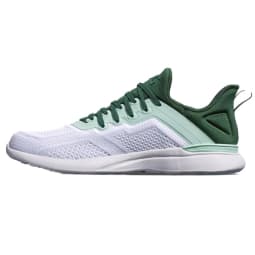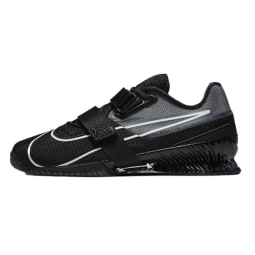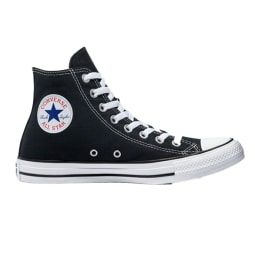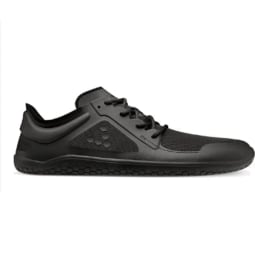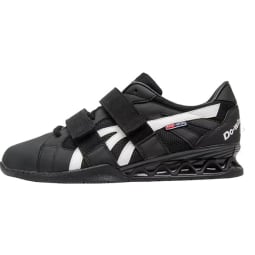The 9 Best Weightlifting Shoes Of 2023 For Proper Form, Support, & Comfort

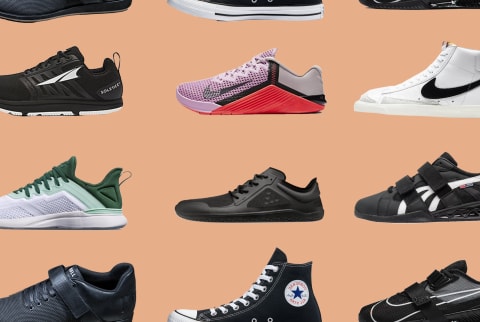
Did you know your muscle strength could be a window into how long you'll live? Weightlifting can help increase energy levels1, support hormonal balance2, and increase longevity—but the right footwear is essential to keep your body healthy and supported during each workout. In other words, running shoes won't cut it if you want to be smart about injury prevention. The best weightlifting shoes are designed to offer support while promoting balance and proper form.
To help you choose the best weightlifting shoes for you, we asked a podiatrist and holistic chiropractor for their top picks so you can crush your strength training workouts with confidence.
The best weightlifting shoes of 2023:
The best weightlifting shoes of 2023:
What makes a shoe good for weightlifting?
The best weightlifting shoes are designed to promote healthy technique and reduce the risk of injury—two things every gym-goer can get behind. These shoes feature either a flat sole that will allow you to root down for balance or a wedge-shaped sole that supports proper form and better range of motion. In fact, it's common for serious weightlifters to carry more than one pair of shoes in their gym bag and swap out for different exercises.
Weightlifting shoes should be sturdy, offer ankle support, and have high traction that prevents shifting as you train. Add it all up and you have something quite different from a long-distance running shoe, which podiatrist Robert Kornfeld highly advises against wearing while lifting. In fact, podiatrists say shoes with a comfortable-yet-stiff sole that does not bend easily at the ball of the foot and gives good resistance will help minimize serious foot injuries such as turf toe hyperextension and injuring your plantar fascia. "Long-distance running shoes are ultra-lightweight, well cushioned, and flexible, so they may not provide the needed support in more stationary types of activity where there is a lot more stance phase stress."
Sarah Sponaugle, a holistic chiropractor, says, "The best feature for a weightlifting shoe is one that doesn't hinder sacrifice support while still allowing for movement in all directions." She recommends looking for something "on the flatter side, so all four quadrants of the foot have good contact with the ground." She adds that weightlifting shoes with a low profile and a wide toe box help activate your toes and the muscles in your feet to provide a solid foundation.
While having a great pair of weightlifting shoes plays a big part in avoiding injury, it's still important to understand the movements and keep correct form. Don't rely on your shoes to do it all. New to weightlifting? We recommend reading up on our guide to strength training, which breaks down the essential movements you'll find in a standard strength training class.
How we picked:
Stability
We picked weightlifting shoes that will give you the most stable base to push off from while providing support from ankles to arches.
Quality
Each shoe we chose is made with durable materials that will last for extended periods of time so you'll get more life out of your investment.
Expert criteria
We sought advice from a podiatrist and fitness trainer to ensure our picks meet the demands for the range of weightlifting routines and foot types.
Reviews & ratings
We scoured the internet for the best weightlifting shoes on the market and used positive and negative reviews to determine which ones are a cut above the rest.
Our picks for the best weightlifting shoes of 2023:
Pros:
- Lightweight
- Breathable material
- Great for short distance running & sprints
Cons:
- Narrow toe box
Colorways:
9 optionsSizes available:
5 - 12.5Half sizes availableReturn policy:
60 days“You definitely want two different shoes for weightlifting and any distance running that’s over one mile," Sponagule says. "A running shoe won’t support the foot in both forward and lateral motions like a weightlifting shoe will.”
That in mind, if you’re cross-training with weights and performing short distance sprints, this is a no-fuss tough and stable sneaker that’ll eliminate the need for a wardrobe change mid-workout. The cushioned foam base protects your joints during high impact moves and the flat, wide heel creates a stable base for pushing off from the ground. The brand also calls this model its most breathable design yet.
With a 4.6 out of 5-star rating on Amazon, this shoe has praise from runners and weightlifters. One reviewer writes, “These are the best training shoes ever! Great fit! Super comfortable and supportive during WODs.” Most negative feedback centers around the color not matching closely enough with the picture.
Pros:
- Lightweight
- Sleek & stylish
- Top pick from a chiropractor
Cons:
- Some reviewers say they don’t hold up over time
Colorways:
2 optionsSizes available:
5.5 - 12Half sizes availableReturn policy:
30 daysAnother cross trainer that’s up for any workout, this is the weightlifting shoe of choice from Sponaugle. What makes Altra’s women’s training shoe stand out from the rest is that it’s been molded around the unique shape of the female foot. It has a roomy toe box and firm cage that gives extra support during lateral movements. The shoe itself is lightweight and flexible and moves well with your foot.
The brand’s Balanced Cushioning™ platform helps position the heel and forefoot at an equal distance from the ground, which is meant to help support proper alignment and form during workouts, walking, and everyday use. This is a zero-drop shoe, so it’s flat between the toes and heels, which boosts performance and reduces risk of injury.
Feedback for this shoe is mostly positive and it has a 3.8 rating overall on the brand’s website. Multiple reviewers comment on how well these shoes perform during weightlifting, and how versatile they are. Negative reviews focus on the shoe’s durability, saying it does not hold up as well as other Altra models. Some reviewers note that the material doesn’t hold up as well as other Alta shoes, but the reviews for this shoe are mostly positive, giving it a 3.8 rating overall.
Advertisement
Pros:
- Can be worn from the street to the gym
- Time-tested
- Custom design available
Cons:
- Narrow fit
Colorways:
6 optionsCustomization availableSizes available:
3.5 - 12Half sizes availableReturn policy:
60 daysNike’s Blazers have been around since at least the 70s, and have become a classic lifting shoe with a bit of a cult following. They’re fairly affordable compared to other options, making them a great pick for people who are new to weightlifting or need multiple shoes for different exercises.
The shoe is sturdy and durable and performs well under pressure. The high top design bodes well for ankle support that keeps the pressure off joints while flat soles offer ideal weight distribution that keeps you balanced. It’s also a shoe that can easily be worn outside of the gym, with plenty of colorways and customization options available.
Some reviewers say they wish these shoes were easier to break in, but others are pleased with the support they offer during weightlifting exercises. One says, "Finally got my hands on these and they didn’t disappoint! Love these for lifting, highly recommend!! True to size.”
Pros:
- Hand-made by skilled craftsmen
- Made with hand selected, high quality leather
Cons:
- Not vegan
Colorways:
6 optionsSizes available:
5 - 11Half sizes availableReturn policy:
60 daysEach NoBull Lifter shoe is handmade and features top-grade leather that’s meant to last for years to come. This shoe is designed specifically for weightlifting, with an impressive 18.5mm heel to toe drop. There’s a molded, removable sock liner for added comfort, and a velcro strap to keep your foot secure during even the most intense workouts. If you’re looking for a well-made, aesthetically-pleasing sneaker that will keep your feet and body supported during deadlifts and intense training, this is for you.
This shoe has a (slightly eyebrow-lifting) perfect 5-star overall rating on the brand’s website, with about 150 reviews in total. People say this “beautiful, classic lifting shoe” helps make them feel “so much better and stronger” during deadlifts, squats, and more. Customers also note that the shoes improve their form and are “totally worth every penny.”
Advertisement
Pros:
- Stylish design
- 8mm drop
- Men's and women's options with plenty of colors
Cons:
- Very short return window
Colorways:
20 optionsSizes available:
5 - 11Half sizes availableReturn policy:
10 daysThe newest model of APL’s TechLoom line is great for generalists who are adding HIIT exercises to their weight lifting sessions. The shoe has a locked-in lacing system and high-quality, low-profile cushioning to help you perform at your best with no interruptions. There are also rubber grip pads placed in key high-wear areas, for extra stability and traction.
You’ll have a full range of motion with this flexible, lightweight shoe—and you don’t need to carry an extra pair in your gym bag, either. Like most APL models, this shoe is designed to be worn from the gym to the street. As flexible as the shoe is, the material is actually quite sturdy and keeps your foot secure and stable whether you’re walking or working out.
The reviews on APL’s site are overwhelmingly positive. People say they are great for lifting and looking good while doing it. One reviewer writes, “I love the TechLoom Tracer, and this is my third pair so I could have it in three colors. The insole is so comfortable and cushioning. The outer material is soft and comfortable. They’re just a great shoe overall whether you’re wearing them for fashion or for fitness.” The only negative feedback we can find is that this shoe tends to run small. For that, just size up one half size.
Pros:
- Dual adjustable straps for secure support
- Rigid midsole helps you generate more force
- Noticeable heel-to-toe drop
Cons:
- A bit on the heavier side
Colorways:
4 optionsSizes available:
3.5 - 16.5Half sizes availableReturn policy:
60 daysThis sleek shoe is designed for stability, with a noticeable heel drop to enable power transfer, making it a great choice for weightlifting. The wide heel creates balance during heavy lifts, and the minimal flex in the upper portion gives you a solid base for powerful lift-offs.
Adjustable straps at the midsole make this a true lifting shoe. These straps keep your foot secure through explosive workouts. There are also straps that go across the laces, so you don’t have to worry about them coming undone and interrupting your workout.
This shoe has gotten a lot of love on Nike’s website, with a 4.5 out of 5-star overall rating. One reviewer writes, “Best lifting shoes I’ve ever had. I’ve had Reebok and DoWins before, nothing compares to the stability of these Rom 4s. The double straps keep everything tight and the heel elevation is perfect.”
Advertisement
Pros:
- Can be worn from the street to the gym
- Available in standard & wide sizes
Cons:
- May not fit true to size
Colorways:
11 optionsCustomization availableSizes available:
3 - 20Half sizes availableStandard and wide optionsReturn policy:
30 daysAn oldie but a goodie, this is a great budget-friendly weightlifting shoe. It’s a no-frills choice with a high top design for ankle support, a flat sole for even weight distribution and balance, and endless colors to choose from. If you want something straightforward, classic, and affordable that will get the job done, you can’t go wrong with Chuck Taylors.
With an astounding 4.8 overall rating and over 4,000 customer reviews, reviewers agree that you can’t beat this quality for the price. People note that they’ve worn these shoes for decades, praising the lightweight canvas material and the lightly-padded footbed. It’s duly noted that these sneakers run large, so consider buying at least a half-size down.
Pros:
- Foot shaped (not shoe shaped) to correct stance and strengthen muscles
- Wide, thin, and flexible
- Made with sustainable materials
Cons:
- Runs large
Colorways:
7 optionsSizes available:
5.5 - 11.5Half sizes availableReturn policy:
100 daysAccording to Sponaugle, barefoot shoes are a good option for weightlifting for a few reasons. When we go ‘barefoot’, we tone muscles, increase sensory perception, improve posture and strengthen core. That’s because we walk correctly by landing softly on the heel and using the power in the toes to push off. “If you’re exploring this type of shoe for the first time, just know there is an adjustment period and you must slowly increase the time you wear the shoe,” Sponaugle advises.
Vivo’s Primus Lite barefoot shoe is top-rated amongst its type, designed to support the most natural movement possible. Plus, if you’re looking for an all-workout type of shoe, these are fit for every run, walk and workout. The company uses recycled, natural materials and has a recycled shoe program, Revivo, so you can buy or sell used Vivo barefoot shoes to help reduce waste.
Customers recommend sizing down, but feedback for this shoe is generally positive, with reviewers giving it a 4.3 out of 5-star overall rating on Amazon. One writes, “It’s unlike any shoe I’ve ever tried.” Another says, “These have been my everyday shoes. Great for workouts as well. A great “barefoot” feel with zero drop and flexible sole.”
Advertisement
Pros:
- Made for competitive lifters
- Wide fit
- Double strap for extra security
Cons:
- Only one color option
Colorways:
1 optionSizes available:
4.5 - 14Half sizes availableReturn policy:
30 daysA bit different than the best running shoes for wide feet, weightlifting shoes should support lateral movements and have a bit less cushioning under your feet. This sneaker has a wide toe box for added comfort, and a 0.75" hard plastic heel—which is the preferred height for Olympic lifting. The nylon mesh material is airy and breathable, but the shoe itself is incredibly secure, with straps to keep everything in place.
The only downside is that this shoe only comes in one color, but the black and white design is quite versatile. Just note, the brand recommends sizing down a half size from your running shoe size for the best fit and results.
The overall consensus on Rogue’s website is that this is a great shoe for a great price. One reviewer writes, “I have wide feet, and these are the only lifting shoes I fit into. They're solid and really helped me hit depth for squat PRs. If you can't afford/find the squatU shoes, this is the best alternative for people with wide feet.”
Comparing the best weightlifting shoes
| Product | Price | Sizes | Colorways | Half Sizes Available | Wide Sizes Available |
|---|---|---|---|---|---|
| Nike Metcon 8 | $130 | 5-12.5 | 9 | Yes | No |
| Altra Solstice XT 2 | $130 | 5.5-12 | 2 | Yes | No |
| Nike Blazer Mid 77 | $105 | 3.5-12 | 6 | Yes | No |
| APL TechLoom Tracer | $250 | 5-11 | 20 | Yes | No |
| Nike Romaleos 4 | $160 | 3.5-16.5 | 4 | Yes | No |
| NoBull Lifters | $299 | 5-11 | 6 | Yes | No |
| Converse Chuck Taylors | $65 | 3-20 | 11 | Yes | Yes |
| Vivo Primus Lite | $160 | 5.5-11.5 | 7 | Yes | No |
| Do-Win Weightlifting Shoe | $95 | 4.5-14 | 2 | Yes | No |
How to choose the best weightlifting shoes
Aside from narrowing down for a specific need such as wide feet or cross training, Sponaugle says there are four critical elements to consider to find the best weightlifting shoes: a low profile, lateral support, flexibility in the front of the shoe, and a wide toe box to help activate the toes and muscles in the front of the feet for a good foundation.
"The best feature for a weightlifting shoe is one that doesn't hinder or sacrifice support while still allowing for movement in all directions. Look for something on the flatter side so all four quadrants of the foot have good contact with the ground."
Finding the best weightlifting shoe that's right for you may take some trial and error, but we made sure that every option on this list had a generous trial period and easy return policy. We recommend you try on the shoe for fit and then give it a test drive during a workout for performance. If there's pain or discomfort, it's time to try a different pair or get a shoe recommendation from your doctor.
FAQ:
Can you deadlift in weightlifting shoes?
Sponaugle confirms that you can deadlift in a weight training shoe. "This is actually the preferred shoe when including deadlifts into your workout routine," she said.
Can you run in weightlifting shoes?
According to Sponaugle, you should use a running shoe when running any distance over 1 mile. A running shoe is designed to support the foot in a more forward motion versus a weightlifting shoe, which has support for both forward and lateral motions. Additionally, running shoes have cushioned bottoms versus weightlifting shoes, which have very little cushion so the individual may have more awareness of the ground beneath their feet.
Where do you buy weightlifting shoes?
Sponaugle says you can find great weightlifting shoe brands both online and in sporting goods and retail stores.
The takeaway
Weightlifting is a great way to boost your health, and it can have a tremendous impact on your metabolism3, blood sugar regulation4, longevity and brain health5, bone health, and immunity6. Even just two or three 20- to 30-minute sessions a week can help you avoid cognitive decline, according to the Mayo Clinic. And when you're ready to invest in another pair of sneakers for your workouts beyond the weight room, you'll love our picks for best gym shoes of 2022.













